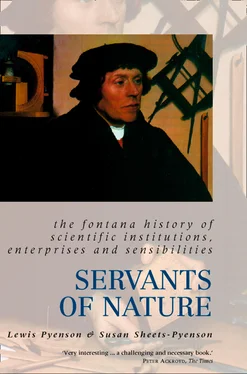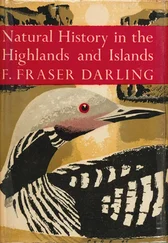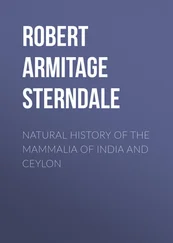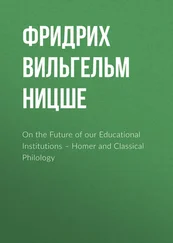1 ...7 8 9 11 12 13 ...29 Natural sciences in South Asia found their firmest supporters not in schools, but in family-controlled guilds. Astronomical knowledge, for example, was a guild secret. The restricted nature of certain kinds of natural knowledge also coloured science instruction at Chinese colleges. Insofar as we have certain knowledge of them, Chinese institutions of higher learning may be traced to the philosophical schools formed at the time of the Warring States, from 475 BC to 221 BC, when kingdoms large and small contested for supremacy. Teachers were required to train and discipline a civilian bureaucracy, and states naturally competed to recruit teachers who could transform administrative norms into ethical principles. The resulting philosophical free-for-all is known as the time of the Hundred Schools. In terms of the multiplicity of sectarian doctrine, the Hundred Schools seem not unlike the late Hellenic period. A handful of the Hundred Schools survived a period of internecine warfare and continued to have an impact long into a time of imperial rule, indeed, up to the present: the Confucianists, the Legalists, the Mohists, the Taoists, the Logicians and the Naturalists.
The Confucianists, followers of Master Kung, held that virtue could be acquired by learning, although his disciples, from Mencius to Xun Zi, differed about how much education might do for people. Legalists, under Han Feizi, believed in the literal interpretation of legal canons and the inflexible application of jurisprudence, a procedure offered to make law both equitable and independent of executive privileges. Mohists, followers of Mo Zi, proclaimed a religious vision of love and encouraged technological improvements that would defend the weak against the strong. Taoists, tracing their origin to the teachings of Lao Zi, advocated the dissolution of reason in ascetic spirituality; their disengagement from the mechanism of statecraft translated into an antipathy for mechanical contrivance, but their quest for a state of grace led Taoists to experiment with therapeutic regimes for extending and improving life. Logicians, followers of Hui Shih and Kungsun Lung, emphasized a search for generalized concepts transcending the ephemeral particular. The Naturalists elaborated the theories of the two forces (Yin and Yang) and the Five Elements (water, fire, wood, metal, earth), attributed to their master Tsou Yen; in contrast to the other schools, they actively sought to advise heads of state.
As in Hellenistic times with the schools of Athens, the Hundred Schools came together in a secular institution of higher learning, the Academy of the Gate of Chi, located in the capital of the State of Chhi. Founded by King Hsüan about 318 BC, and perhaps inspired by one of its fellows, the naturalist Tsou Yen, the academy assembled scholars of many persuasions and from diverse states. These included Taoists, Mohists, and the great Confucian scholar Mencius. Fellows wore special, flat caps and apparently had no obligations beyond advice-giving; they could aspire to the title of grand prefect.
The Academy of the Gate of Chi – the Chinese counterpart to the Museum of Alexandria – did not survive the imperial unification that ended the Warring States period. The grand victor, Chhin Shih Huang Ti, organized an imperial bureaucracy, brought the defeated aristocracy to heel at his court, expanded public works, maintained a large army, and engineered the great northern wall. As part of his codification of laws and rites, he ordered the destruction by burning of all books except his own archives and treatises on medicine, divination, and agriculture. Along with purging wrong words, the new potentate executed wrong-thinking scholars. Chhin Shih Huang Ti died about 210 BC, barely fifteen years after unifying China; his successor, a usurper son, lasted four years more before the Chhin empire (and its academy) dissolved in social disintegration and revolt.
Liu Pang, an escapee from death row, emerged from the ruins of the Chhin to found the Han empire in 202 BC. His dynasty invented ‘classical’ China. Genuine concern for preserving what the Chhin had condemned (and not entirely eradicated) is found in the establishment of an imperial school (Ta Hsüeh) in 124 BC, with various chairs (occupied by professors, po shih ); its aim was to produce functionaries. The Han school produced scholars for the imperial regime, and they were selected by examination. Students received honorary titles commensurate with their test results; the best of them landed positions in the central bureaucracy. (The whole process was sped by the invention of paper, traditionally attributed to Tshai Lun late in the first century AD.) Various accounts describe an impressive campus, with entry restricted to the sons of noble or administrative families. Although students paid no fees, they were required upon arrival to offer gifts to their professors.
Buddhism made its appearance in China by the third century AD. Its ascetic and non-aggressive doctrine found popularity at the time of material dislocation surrounding the collapse of the Han empire into competing kingdoms. In disunited China there were significant attempts at promoting institutions of higher learning, but the instaurations all seem to resemble the various ephemeral and unsuccessful universities of medieval Europe. Around the beginning of the fifth century, for example, the Northern Wei established an imperial school in their capital; the name soon changed to the Central Book School, reflecting its concern with the Confucian classics, for which an anthology, or codex, had recently been prepared.
Chinese civilization emerged from divisions and rivalries to create a golden age under the autocratic Sui and then the Thang. About 583 the first Sui emperor, Wen Ti, revived the nobles’ school (Kuo Hsüeh), a school for meritorious commoners (T’ai Hsüeh), and a preparatory school (the Four Gates School), each of which had five professors; he also created for the first time a separate mathematics school with two professors. The purpose of higher education under the Thang was still to prepare students for a government position, and this could be attained by success in a national examination. An inflexible form of this system emerged much later, in the Yüan, when the mandarinate drew exclusively from students who had mastered the Confucian classics. The system did not entirely ignore natural knowledge (from the Thang onward there were separate mathematics examinations), but science undoubtedly constituted the lowest path to success.
A later Thang emperor, Hsüan Tsung, assembled an independent group of high officials to advise him in scholarly matters – the Hanlin (literally, ‘Forest of Pencils’). The Hanlin Academy, as it came to be called, emerged as the premier learned authority in China. Awarded the title of Learned Scholar in 738, Hanlin associates – men who were practical as well as erudite – became, by the middle of the century, China’s court society of government advisers. Hanlin academicians were charged with emending and authenticating the Confucian corpus that served as the basis of the civil-service examinations. By the Ming period, membership was an exclusive prerogative of senior and accomplished scholars. The Academy extended its authority straight through the Chhing (Manchu), and it expired only in 1911.
The Hanlin Academy regulated orthodox scholarship. Furthermore, the genre of scholarship to be regulated – the Confucian classics – offered scant place for treatises in natural knowledge. The Hanlin did, however, directly supervise an advanced imperial school, revived in the middle of the eighth century, and over the next five hundred years there are persistent intrusions of extra Confucian discourses into diverse state schools. In part this reflects the syncretic evolution of devotional thought, where Buddhist and Taoist notions were incorporated into Confucianism; in part it was a desire to train adepts in medicine, agriculture, and possibly also geography. The time of the Yüan, under the Mongols, again saw the introduction of foreign ideas, the expected result of an empire that stretched from Budapest to the Pacific Ocean. Interest in things Islamic continued with the establishment of the Ming dynasty in 1368. As Chinese traditions merged with those of the Mongols, it becomes appropriate to turn to the institutions of higher learning in medieval Islam.
Читать дальше












